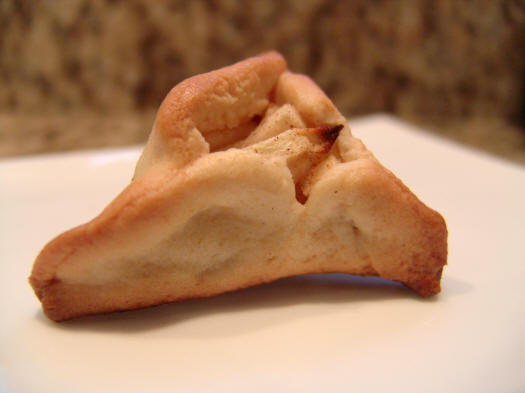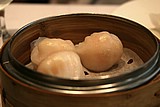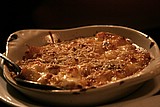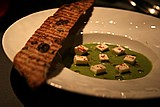Home |
Restaurants by City
|
Food Photography |
Archive | Philosophy |
![]()
Right now we are eating in Seattle, Washington.
|
Monday
2005
Permalink
|
Hamentaschen, tasted on March 19, 2005 Yet another Jewish holiday is coming up - Purim. The old joke sketches the outline for the backstory of just about every Jewish holiday: "they tried to kill us, we survived, let's eat". This is another one of those combined with sanctioned dressing up and silliness. As for the food, triangular fruit-filled pastries made to resemble the bad guy's ear or hat are one of the staples. Historical perspective from my father the historian:
Often at bakeries you'll find them (hamantaschen, not hats) filled with poppy seeds or prunes. My mom knows better than that. She has always made hers smaller, lighter, and stuffed with apples - sort of like a mini-apple pie.
On Saturday, Sivan (my three-and-a-half year old son) and I decided to take out his grandmother's recipe and make hamentaschen. They turned out just like she makes them - well just about like hers. There's no real substitute for her making them herself. Maybe we'll videotape her next time she does it. My mom says she adapted the following from a recipe by Lillian Kaplun, For the Love of Baking, page 47, published in Toronto 1960. Makes about fifty hamentaschen. Believe it or not, mine were even better the second day after they'd completely cooled.
Dough
Filling
Instructions
You don't have to celebrate Purim to enjoy these little apple-turnover like pastries any time of year. |
|
Our Sponsors
Free Car Listings Hot Tubs Stools Saunas Bar Stools - Calendar and Event Schedules - Food Events and Calendars - Wine Events and Calendars - Digital Photography Resources - Software for Advertisers - Jewish Gifts and Judaica - Howard Stern Podcast - ponytailed blogger Jonathan Schwartz

Browse tastingmenu
Home |
Restaurants by City X |
Food Photography |
Archive | Philosophy |
![]()
Free eBooks: All About Apples
| Autumn Omakase
More:
Discussion |
Cool Food T-Shirts |
Ingredients
| Markets |
Recipes
Search |
Blog FAQ |
Other
Blogs
Best of tastingmenu
|
City View
Entry: July 6, 2006 |
Blue Plate
Entry: June 19, 2006 |
L'Atelier de Joël Robuchon
Entry: July 18, 2006 |
Browse by City
Boston | Chicago | Houston | Las Vegas | Los Angeles | Maui | New York | Philadelphia | Portland | San Francisco | Seattle | Toronto | Utah | Vancouver | Washington D.C.
Bangkok | Beijing | Hong Kong | Seoul | Tokyo
Amsterdam | Berlin | Italy | London | Madrid | Paris | Vienna
Browse by Month
2006
2005
2004
2003
2002
2001
Comments, questions, or feedback:
info / at / tastingmenu / dot / com
All pages Copyright (c) 2001-2006 tastingmenu.com
Last modified 01/30/07.




